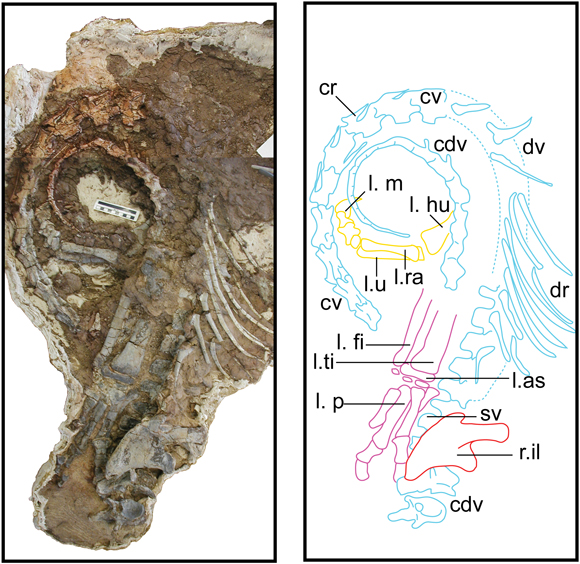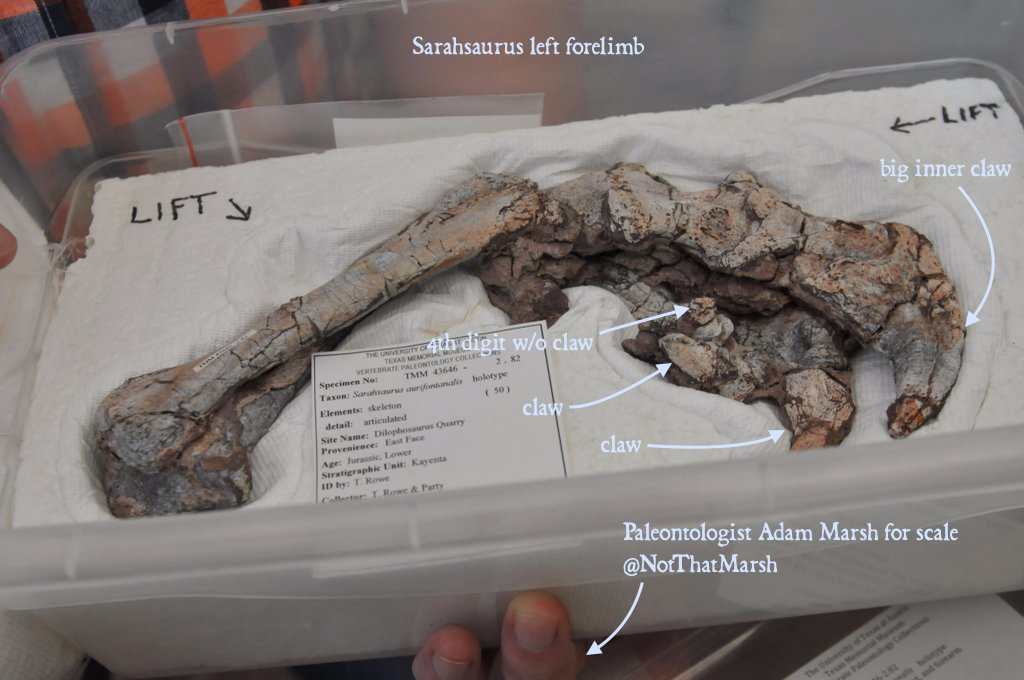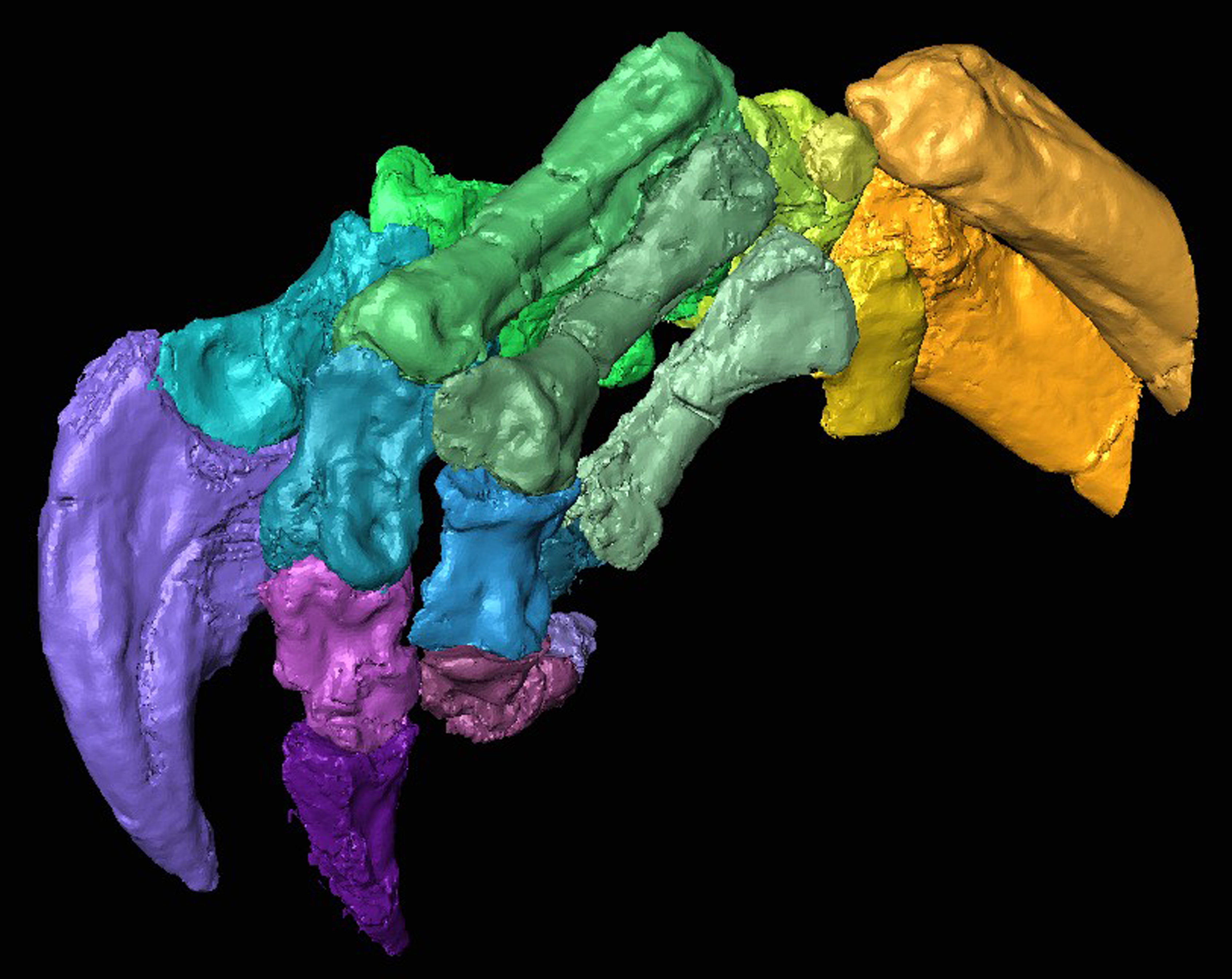Sauropods are a group of plant-eating dinosaurs which exceeded all other terrestrial vertebrates in body size. A new, in-depth anatomical description of the best preserved specimens of Sarahsaurus aurifontanalis, a sauropod relative from North America, could help paleontologists with unraveling the mystery of why these dinosaurs got so big.

Life restoration of Sarahsaurus aurifontanalis. Image credit: Brian Engh, www.dontmesswithdinosaurs.com.
Sarahsaurus aurifontanalis lived in what is now Arizona about 185 million years ago (Early Jurassic epoch).
“This dinosaur preserves in its anatomy the anatomical changes that were happening in the Late Triassic and Early Jurassic that were occurring in the evolutionary lineage. It can help tell us how getting big happens,” said Dr. Adam Marsh, a paleontologist at Petrified Forest National Park.

The new anatomical description of Sarahsaurus aurifontanalis — made by Dr. Marsh and his colleague, Professor Timothy Rowe from the University of Texas at Austin Jackson School of Geosciences — is based on two skeletons from the Kayenta Formation of Arizona.

“The specimens are well preserved in 3D and remarkably complete, which is very rare in the fossil record,” said Dr. Matthew Brown, director of the Jackson School Museum of Earth History Vertebrate Paleontology Collections, who was not involved in the study.
“Such complete specimens help paleontologists better understand the fragmentary and incomplete fossils remains we typically find.”

Sarahsaurus aurifontanalis resembled a ground sloth. It stood upright, walked on its hind-legs and had powerful forelimbs with a large, curved claw capping the first finger of each hand.

It had a lot in common with the earliest sauropod ancestors — like walking on two legs — but it was also starting to show features that would foreshadow how its massive relatives would evolve — such as an increase in body size and a lengthening of the neck vertebrae.

“It’s starting to gain the characters of getting large compared to the earliest members of the group,” Dr. Marsh said.
Size and neck-length are features that sauropods would take to extremes as they evolved.
By studying these traits and others in Sarahsaurus aurifontanalis, and seeing how they compare to those of other dinosaurs, scientists can help reveal how these changes occurred across evolutionary history and how different dinosaurs relate to one another.